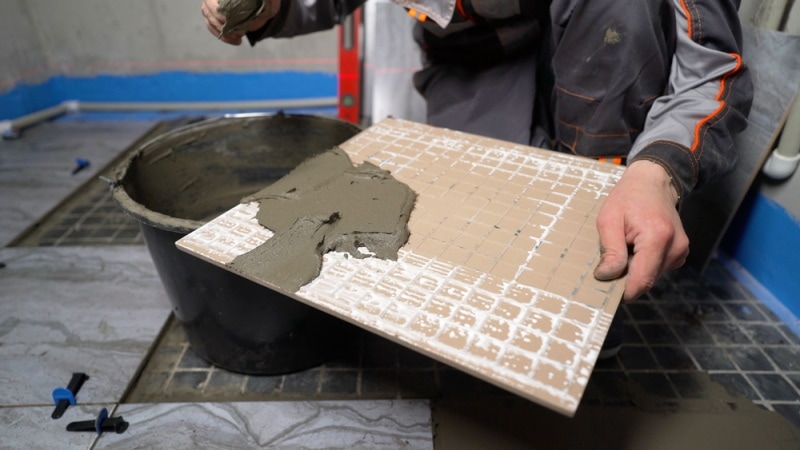Mortar vs Stucco: How Are They Different
-
Kristin Hitchcock
- Last updated:

Mortar and stucco are very similar. In many cases, you may find the terms used interchangeably. However, they aren’t the same thing. Some slight differences control how they’re used and what they can do. You want to choose the right one for your project to avoid unnecessary complications.
The biggest difference is that stucco is only utilized as a wall covering. It isn’t used as a construction material. Instead, it is purely used for aesthetic purposes. Mortar is used for construction purposes but can also be used for aesthetic reasons. You don’t want to use stucco when mortar is necessary.

At a Glance

| Mortar | Stucco |
| Can include many additives | Often just cement |
| Can also be an adhesive | Concrete finish for aesthetic reasons |
Overview of Mortar

Mortar is a mixture of sand, lime, and Portland cement. It sets quickly and hard, allowing it to resist weathering. The proportions do differ a bit, though. Therefore, some mortar is harder than others. You can use it for plaster and for setting cement. Some types of mortar are set extremely quickly, so they can be challenging to work with in some cases.
Mortar is traditionally utilized between bricks and under tiles. However, you can use it for many different reasons. Today, it may be utilized for aesthetic purposes, though Stucco is still the most popular cement product.
- Holds fast
- Great as a fastening
- Can be used for some aesthetic purposes
- Can be hard to work with

Overview of Stucco

Stucco is a construction material that is made of sand. It’s the same thing as mortar, but the proportions differ. It tends to be utilized as a textured finish on a wall. It doesn’t have the same staying power as mortar, so it isn’t often used as an adhesive. However, it may be easier to work with for this reason.
If you’re trying to add texture to a wall, use stucco. Otherwise, your needs would likely be met better by a different material. Modern stucco can contain additives that make it act a bit different from traditional stucco, so be sure to always research the particular brand you’re purchasing. Sometimes, it’s even weaker.
- Easy to work with
- Designed for aesthetic purposes
- Not as much staying power
When Should I Use Stucco or Mortar?
We recommend utilizing stucco for aesthetic wall coverings—it’s probably your best bet if you’re just using cement for aesthetic reasons. However, if you use it for bricks or tiles, you probably want to use mortar. Mortar has more staying power. Sometimes, it dries faster, too. Therefore, you may want to use stucco if you need more time to work with the material.
These two materials can differ a lot, though. Sometimes, the line between them is very thin and vague. Therefore, you should do plenty of research on the particular brand you’re purchasing to ensure it’s appropriate for your needs.

Can I Use Mortar as Stucco?
Yes. This typically works fine—you just don’t necessarily want to go the other way. Mortar can often be utilized as stucco, but you can’t always use stucco as mortar. However, mortar has a different consistency and composition, so it won’t be the same as stucco.
If you only have mortar, it will work in a pinch.
What Are the Disadvantages of Mortar?
Mortar doesn’t harden very long, and it can shrink when drying. It also isn’t very resistant to chemicals. Therefore, it may not be the best option in all situations. However, it works well for brick and tile laying—its primary purpose.
However, there are many types of mortar and they don’t all have these downsides. Therefore, you’ll need to research the exact mortar you’re using to determine if it suits your purposes.

Final Thoughts
Mortar and stucco have different uses. However, the line between them is vague. It mostly depends on how the company decides to market its product. Both products can include additives, which affect how they work. Therefore, you should research the exact brand you’re using. Different additives and concentrations change how the cement mixture behaves.
Typically, stucco is utilized for aesthetic purposes and mortar is utilized as an adhesive. However, they can be utilized interchangeably in some cases.
- Related Read: Mortar vs. Grout: How Are They Different?
Featured Image Credit: Left – Mortar (Angurt, Shutterstock) | Right – Stucco (Dany_cn, Shutterstock)
Contents
